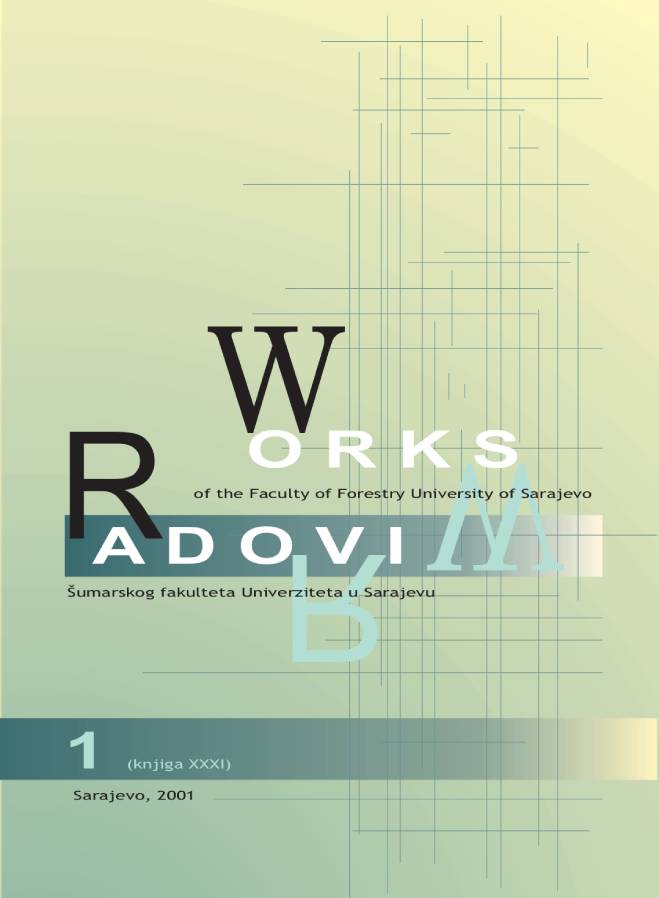Impacts of herbivores on forest regeneration
DOI:
https://doi.org/10.54652/rsf.2001.v31.i1.231Abstract
Impacts of herbivores on forest ecosystems and their regeneration can be very significant in conditions of over-abundance of herbivores and lacking predators. This paper is dealing with methods estimation of their damages to young plants.
Fifteen experimental plots were placed in three different areas (five plots in each one), according to altitude span. At every single plot, 50 plants were marked with measurements of their height and possible previous damage. Plots were controlled in
November 1999, May 2000, and July 2000. Damage was classified in three categories:
a) severe (browsing of terminal shot or girdling stem by bark-stripping or by antler
trashing);
b) medium (more than two lateral shots browsed or partly bark-stripping);
and
c) low (one or two lateral shots browsed).
Obtained results show that severely damaged plants were recorded at the rate of over 44% (at 11 experimental plots, out of 15); medium damaged plants were recorded at all experimental plots, at the rate 28,6%; low damaged plants, at the rate of 14,6 %; and
undamaged plants were recorded only on 12% of plants. This means that the impacts of herbivores on forest regeneration are extremely high under conditions with no predators. Protection measures are complicated and expensive, and culling can't provide expected effects, due to many factors (political, ecological, etc.). To solve this problem a new approach is recommended, e.g. re-introduction of predators as a safe solution in order to achieve an ecological balance between herbivores and plant resources
in forest ecosystems.
Downloads
References
Caughley, G., Sinclair, A.R.E. (1994): Wildlife Ecology and Management, Blackwell Science, Cambridge.
Gill, R.M.A. (1992): A Review of Damage by Mammals in North Temperate Forests. Forestry, Vol.65, No.2.
Leopold A. (1933): Game management. New York, Scribner, Reprint,1999.
McLean C. (1994): The Effect of Deer Culling on Tree Regeneration on Scaniport Estate, Inverness-shire: A Study by the Deer Commission for Scotland. Scottish Forestry, Vol.53, No. 4, 1999.
Owen-Smith N., Robbins C.T. and Hagerman Ann E. (1992): Browse and Browsers: Interactions Between Woody Plants and Mammalian Herbivores. TREE, Vol 8, No. 5, May 1993.
Welch D., Staines B.W., Scott D. and Catt D.C. (1985) : Bark stripping damage by red deer in a Sitka spruce forest in Western Scotland. Forestry, Vol. 60, No. 2, 1987.






















